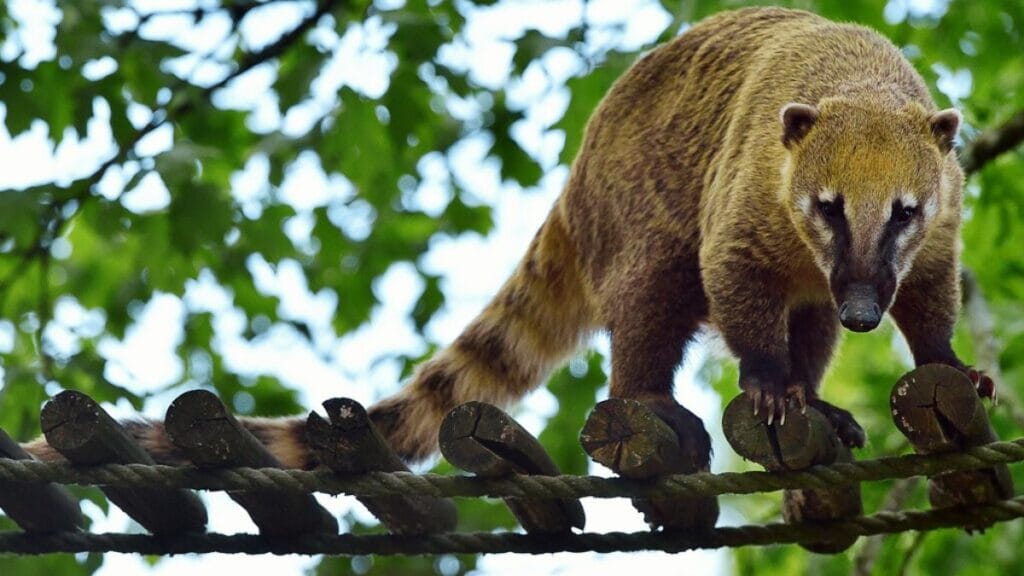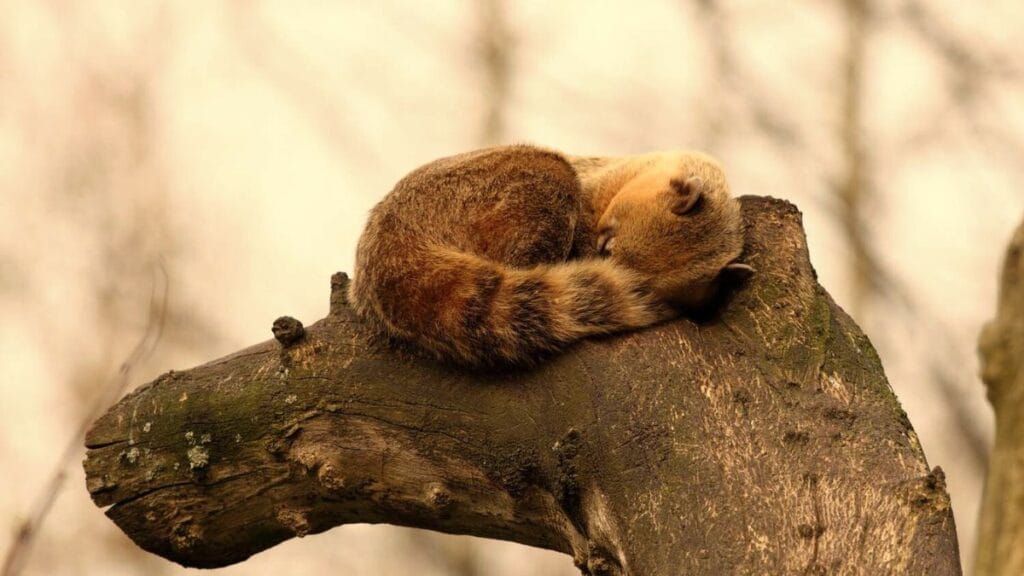Coatis, also known as coatimundis or quash, is a strange cross between a raccoon, lemur, and monkey with long tails.

The diurnal mammals are generally found in South America, Central America, Mexico, and the southwestern part of the United States.
In recent years, Coatis have gained a lot of internet fame as in a TikTok clip they were seen playing and looking like little dinosaurs.
7 Unknown Facts About Coatis:
Coatis are full of surprises as they have very unique adaptations. Despite having such heavy internet popularity, very few people showed interest in exploring Coatis.
Coati- The Name Is Derived From Their Nose:
The name ‘Coati’ or ‘Coatimundi’ is thought to have originated from the Tupian language (an indigenous language of South America).
The word ‘Coati’ or ‘kua’tim’ is formed by mixing ‘kua’ which means belt and ‘tim’ which indicates nose.
The name ‘Coati’ refers to their sleeping style as these animals sleep with their nose tucked into their belly.
You Can’t Hide From Coati:
Coatis have highly flexible, elongated noses and excellent sense of smell. Coatis are often seen sniffing along the ground in search of prey.
Their strong sense of smell helps Coatis to find prey out of their sight. Also, Their strong forelimbs allow them to dig into crocodile nests, destroy decaying logs, and overturn large stones for hunting.
Coatis Are Very Smart:
Coatis belong to the Procyonidae family which is known for their intelligence. Other members of this family such as raccoons and olingos show similar smartness as Coatis.
With their strong and evolved brainpower, Coatis are known for solving complex problems and remembering sequences of actions to gather food.
However, Coatis don’t show intelligence only to find food, but they also use their smartness to protect themselves from predators and find mates.
High Quality Adaptations:
Coatis are known for their unique and evolved adaptations that allow them to survive in a difficult and harsh situation.
The omnivorous nature of their palate, sensitive nose, impressive mobility and speed, and high intelligence are probably a few of the reasons why Coatis are comfortable to thrive in any conditions.

However, these small intelligent mammals are not smart enough to escape human traps and are often found in illegal pet markets around the world.
Complex Social Structure:
Female Coatis form a large group or association which is termed a band that helps them in their collective survival; whereas the males are solitary after reaching maturity.
Members of a band discuss other Coatis between them and inform their group members if they have aggressive confrontations with other group members.
Male Coatis, much larger than females, usually spend their time fighting with other male Coatis and only join a band during the breeding season.
Coatis Are In Danger:
In recent times, Coatis have faced a significant amount of threats due to illegal hunting and habitat loss. Habitat loss squeezed them into a small part of the rainforests which makes them more prone to hunting.
White-faced Capuchin monkeys often raid the nest of Coatis and hunt the younger ones. However, chimpanzees and baboons are their well-known predators.
It is worth mentioning that each band members keep an eye on potential predators and uses alarm calls to alert the group about the potential dangers.
Not Much Information Is Available About Every Type of Coatis:
Scientists are well-informed about ring-tailed and white-nosed coatis as they are often encountered by people.
On the contrary, there is very little but no information available about the eastern mountain coatis or western mountain coati as they live in a small specified area in very high altitude forests.
Also Read: These Prehistoric Penguins Were Taller Than LeBron James
Also Read: Are Sables Good Pets? 5 Facts To Remember Before Buying